| Index |
Temple Ewell |
|
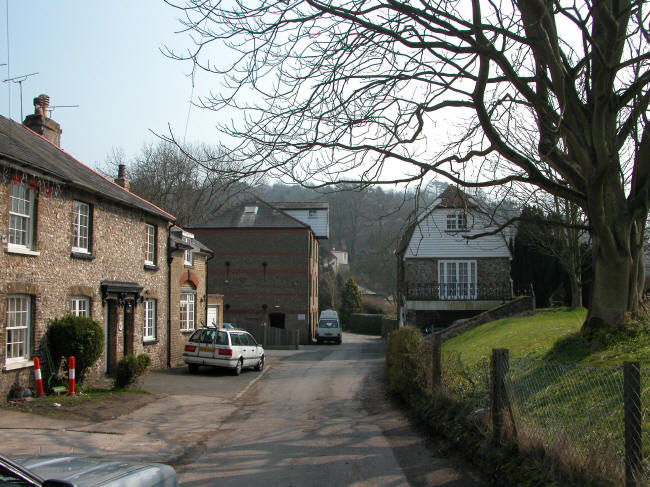 |
||
| Just half a mile from the source of the river
Dour, in a deep valley behind Dover, stands the pretty village of Temple
Ewell; the name "Ewell" is derived from the Anglo-Saxon for "river
spring." The village is known to have existed since at least 770A.D. and by 1086 it boasted a manor house, five watermills, a small wooden church and about 50 cottages. It became known as Temple Ewell when it was given to the Knights Templar around 1163. It is believed that it was here that King John, after his quarrel with the Pope in 1208, was forced to surrender his crown. The watermill on the right of the picture (above) dates from 1790, although there has been a mill on this site since Saxon times. The steam-powered mill next to it was built in 1870. Milling finally ceased in the 1960s.
|
||
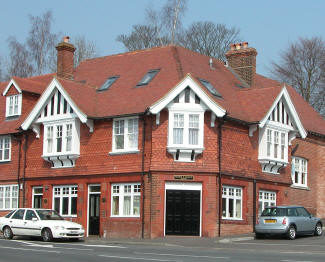 |
Until recently, the village had three pubs: The Donkey (the building on the left of the picture, above), is now closed, as is the George and Dragon (left); the Fox (below) is still serving the village (2007). | |
| The Fox is at the bottom of High Street, near the junction with Mill Street. | 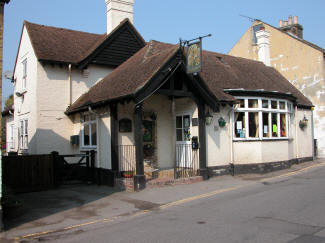 |
|
| The church of St Peter & St Paul was founded by the Knights Templar in the 12th century. It underwent extensive restoration in 1874 when Rev. J. Turnbull M.A. was Vicar; the Churchwardens at the time were W. Robinson and A. Stanley. | ||
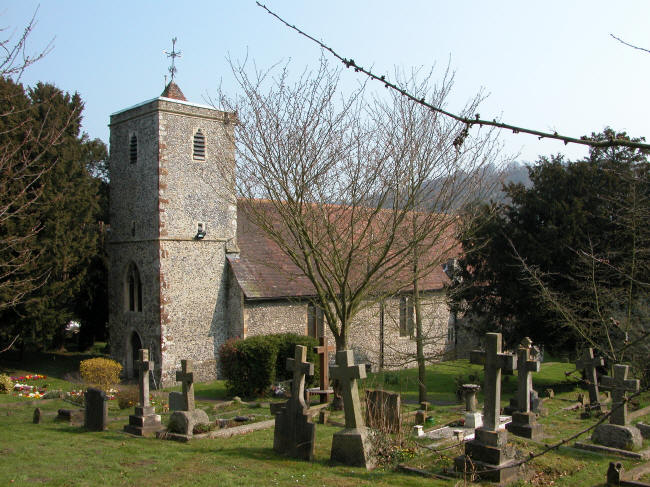 |
||
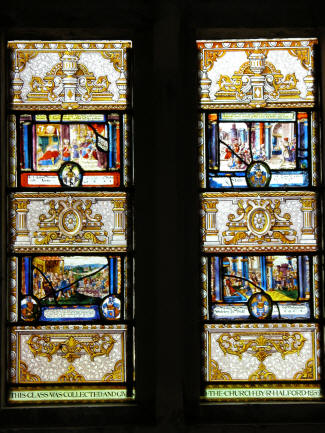 |
These unusual windows were collected and given to the church by R. Halford in 1852. | |
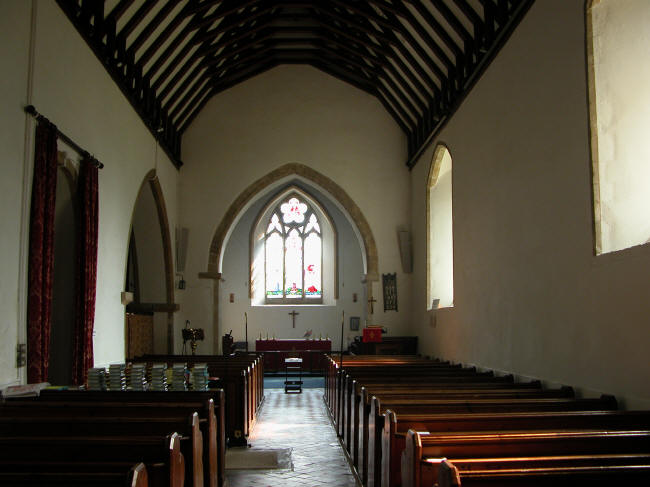 |
||